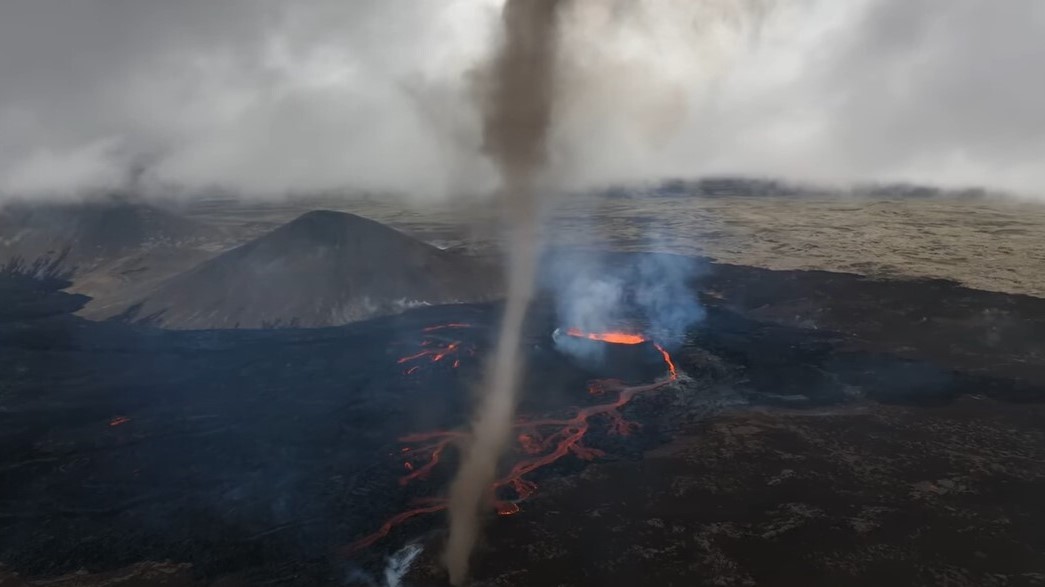Iceland's newest volcano is now spewing out tornadoes
As well as tornadoes, loud bangs sounding across the Reykjanes Peninsula indicate that pockets of methane within the lava are exploding.
Iceland's newborn volcano is announcing its arrival with a bang, spewing out methane explosions and tornadoes to complement the ribbons of lava painting the landscape.
Loud bangs echoed from the eruption site on the Reykjanes Peninsula, the Icelandic Met Office reported on July 27, indicating that pockets of methane gas trapped in the lava flow are exploding. As if that wasn't explosive enough, Earth's newest "baby volcano" triggered a whirling tornado, which can be seen rising into the sky in a YouTube video posted on July 24.
Litli-Hrútur, or "Little Ram," was born via a fissure that fractured the ground on July 10 and has been spewing rivers of lava ever since. "When lava flows over a vegetated area, methane gas can be produced when the vegetation does not burn completely," the Icelandic Met Office said in a translated Facebook post. "The gas then accumulates in gaps and cavities in the lava."
These pockets of methane mix with oxygen to form a highly flammable cocktail of gasses. "When an ember or flame from the fire breaks into it, an explosion occurs," the post said. Officials warned that this poses a danger to anyone venturing too close to the lava flow.
Related: Deadly swarm of earthquakes in Japan caused by magma moving through extinct volcano
As for the tornado, it formed above Litli-Hrútur due to a meteorological and geological union. Intense heat from molten rock spewing from a crater warms the air directly above it, making the air less dense and causing it to rise. Under certain wind conditions, this column of hot air can spin up a tornado.

It's unclear whether the tornado formed from superheated volcanic debris hovering above the vent or from the heat of the lava flow, said David Smart, a tornado and storm researcher at University College London's Hazard Center.
Get the world’s most fascinating discoveries delivered straight to your inbox.
"This is a type of tornado that is sometimes seen where there is a strong heat source on the ground and the atmosphere is unstable in the lowest kilometer [0.6 mile] or so near the surface," Smart told Live Science in an email. The atmosphere is considered unstable when temperatures fall rapidly with height, according to the Royal Meteorological Society.
"This seems to be a particularly well-formed and long-lived example which might imply that atmospheric conditions were particularly conducive on this day," Smart said.
There is no sign of the newborn volcano calming down just yet. Researchers recently detected shifts in vent activity that caused the crater to collapse, spilling lava to the north and west while the flow toward the south has stalled.

Sascha is a U.K.-based staff writer at Live Science. She holds a bachelor’s degree in biology from the University of Southampton in England and a master’s degree in science communication from Imperial College London. Her work has appeared in The Guardian and the health website Zoe. Besides writing, she enjoys playing tennis, bread-making and browsing second-hand shops for hidden gems.




